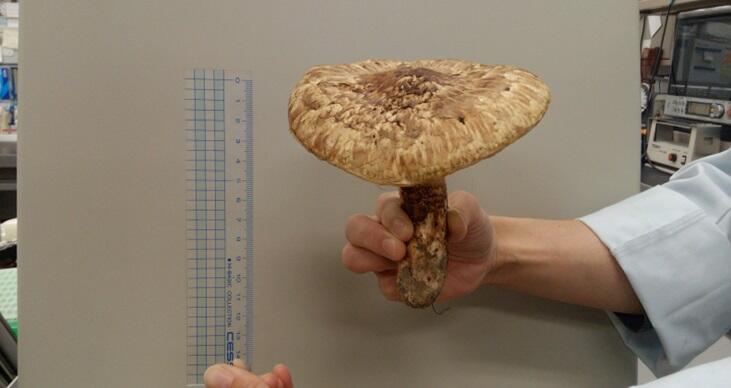Harvests of matsutake, an expensive delicacy in Japan, are shrinking each year, mostly due to habitat destruction. In 2019, the species was designated as "vulnerable (VU)" by the International Union for Conservation of Nature (IUCN). Because matsutake lives as a symbiont with living tree roots, it has yet to be artificially cultured. In addition, ex situ conservation, i.e., preservation of the species outside its natural habitat, is also difficult.
The matsutake genome sequence will be key for understanding its ecology and conservation. Four matsutake genomes have been deposited in the database. However, all four comprise segregated fragments and so, the actual number of chromosomes is unknown.

Provided by Kazusa DNA Research Institute
The research groups of Kenta Shirasawa of the Laboratory of Plant Genetics and Genomics at Kazusa DNA Research Institute; Hiroyuki Kurokochi of the Department of Botany at the National Museum of Nature and Science (Graduate School of Agricultural and Life Sciences at The University of Tokyo at the time of the study) and Professor Shuichi Asakawa of the Graduate School of Agricultural and Life Sciences at the University of Tokyo determined the genome sequence of the matsutake mushroom. The results were published in DNA Research.
The research groups used long‐read sequencing to successfully decode, for the first time, the complete end‐to‐end sequences of the 13 chromosomes of matsutake (160 million base pairs in total) and circular mitochondrial DNA (76 thousand base pairs). They found that the matsutake genome has 21,887 genes, of which 71.6% of the genome comprises repeated sequences, such as transposable elements. The deciphered genome is expected to be useful for studying the ecology of matsutake, which could aid in its conservation. Further analysis of the matsutake genome could facilitate its mass production and artificial cultivation.
The long‐read technique used in this study is expected to become the preferred method for determining end‐to‐end sequences of chromosomes in matsutake and other mushrooms and fungi, and the deciphered genome is expected to reveal the ecology of matsutake and may lead to its conservation. Further analysis of the genes of matsutake could lead to its mass production or artificial cultivation.
This article has been translated by JST with permission from The Science News Ltd. (https://sci-news.co.jp/). Unauthorized reproduction of the article and photographs is prohibited.




